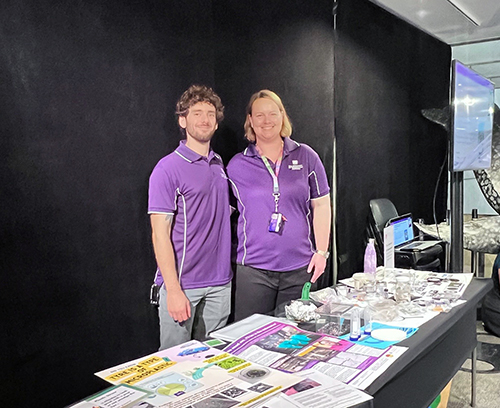Queensland Alliance for Environmental Health Sciences (QAEHS) microplastics staff and students were invited back to participate in the 2024 World Science Festival held at the Queensland Museum (15-24 March). This marks their fourth year of participation in the festival.
QAEHS PhD student and organiser Stacey O’Brien said, “it was a wonderful opportunity to be involved with the Hatchery program at the World Science Festival. We met thousands of very engaged school students and members of the public to provide them with information about the latest research regarding microplastics and other environmental contaminants.”

First time attendee, Dr Ian Zammit found “it was such a great experience talking to so many enthusiastic young people, who already knew so much about environmental issues, asking really insightful questions and sharing their own experiences about how they strive to improve the world around them.”
Gabriel De la Torre (PhD student), commented that, “the World Science Festival 2024 provided us, researchers, a unique opportunity to extend our research to the public. Communicating our message about the threats of plastic pollution and how to prevent it is not only important to promote a more sustainable community but also a very rewarding experience.” Another PhD student, Pooja Lakhey, said that “it was a great opportunity to interact with school students, teachers, and parents. The kids were quite curious (and some even a bit worried) about plastic pollution, and we had a lot of engaging conversations. It was interesting to discuss their ideas and views on how we can individually and collectively contribute to reducing and limiting plastic usage.”
The microplastics team aim to better understand how plastics are released into the Australian natural and built environment, and how they impact the environment and human health. Using state-of-the-art techniques, their research focuses on identifying how plastic leaks into the environment and have published on the presence of plastics in seafood, biosolids released to agricultural land, and emissions from residential clothes dryers. Their work investigates both historic and contemporary emissions, seeking to establish the key sources of plastics into the environment to help inform policies aimed at minimising future releases.



